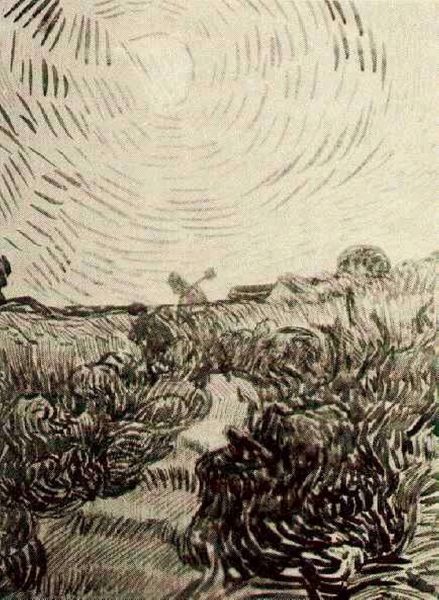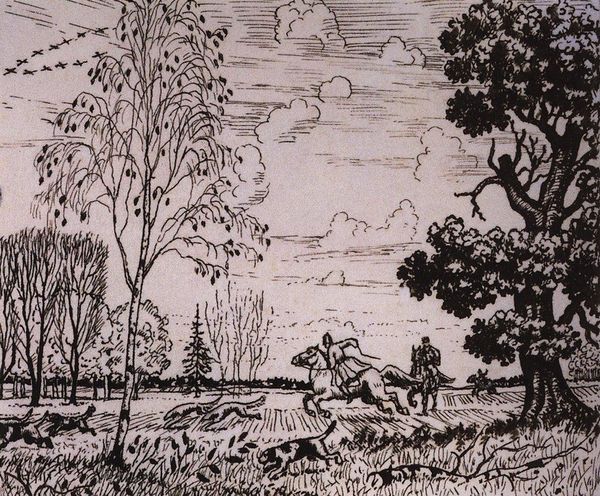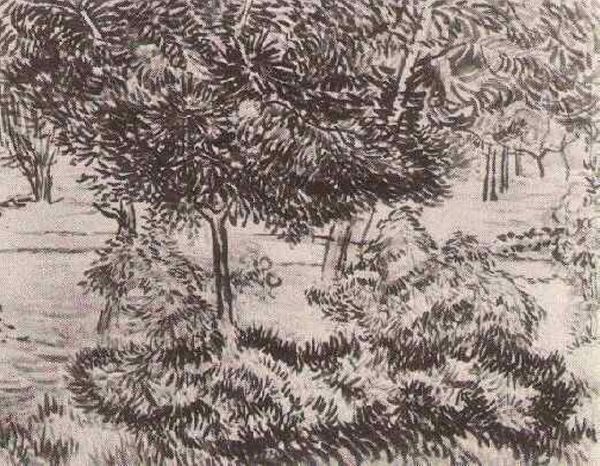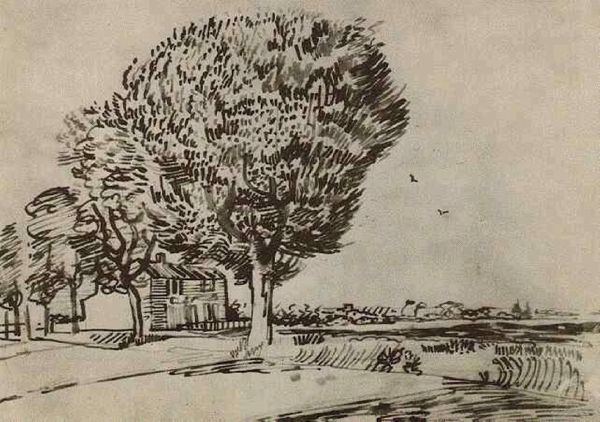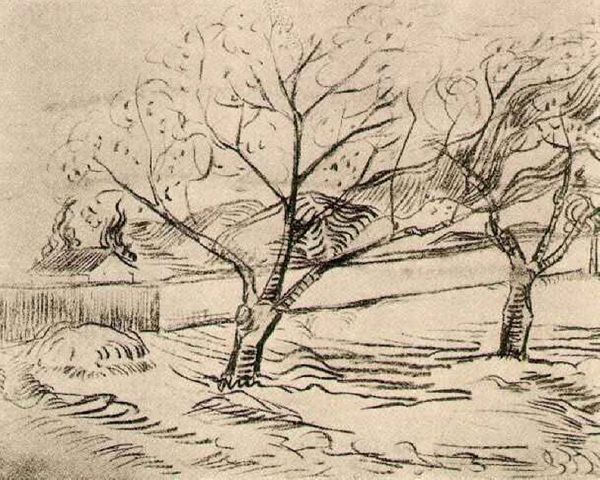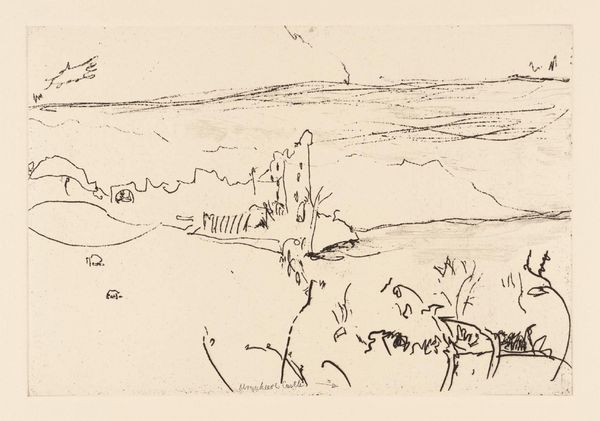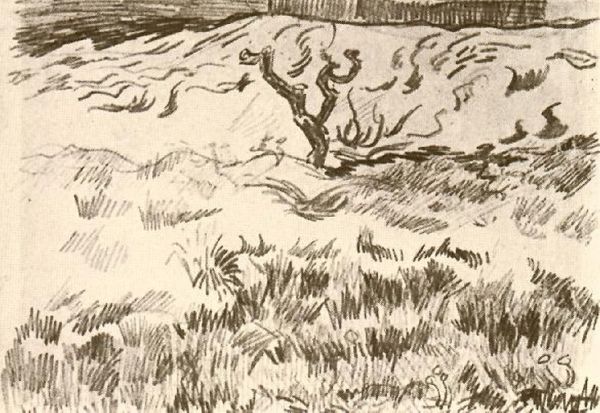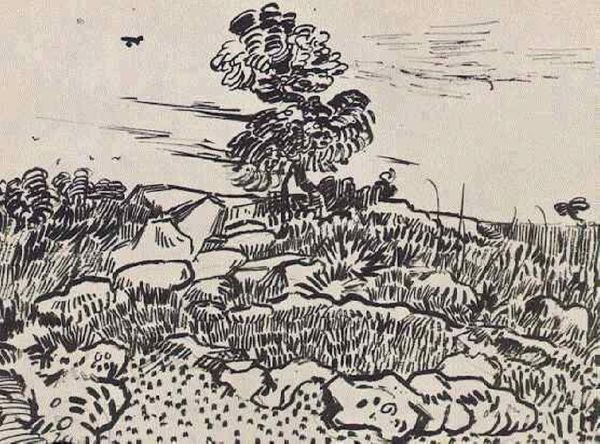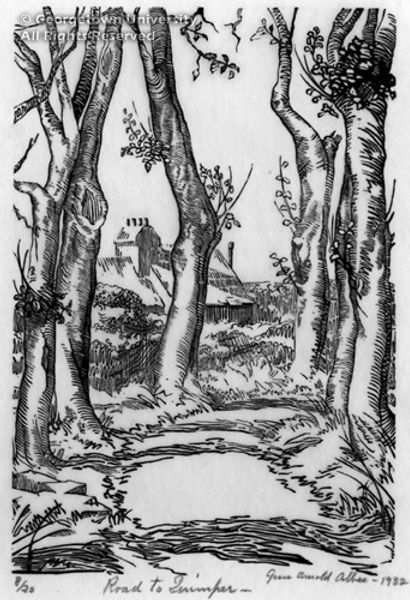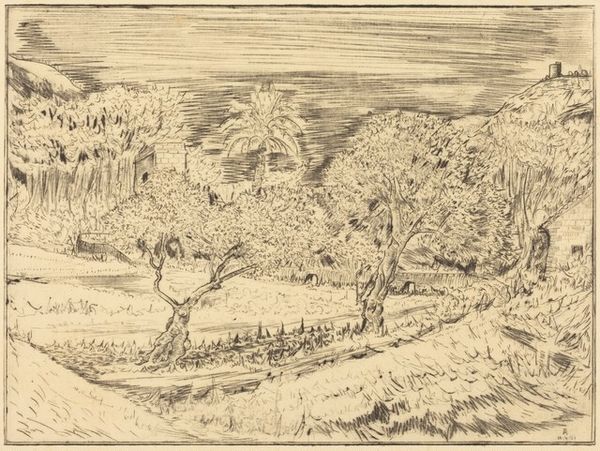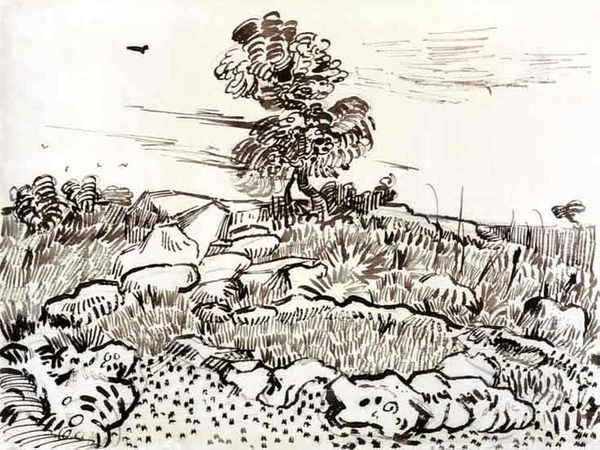
drawing, ink
#
pen and ink
#
tree
#
drawing
#
pen sketch
#
landscape
#
ink line art
#
linework heavy
#
ink
#
sketchwork
#
pen-ink sketch
#
thin linework
#
line
#
pen work
#
scratch sketch
#
post-impressionism
#
realism
#
initial sketch
Copyright: Public domain
Curator: Let's talk about Vincent van Gogh’s "Landscape with the Wall of a Farm," created in 1888 using pen and ink. It's currently housed at the Israel Museum. What are your initial thoughts? Editor: Stark, almost unsettling. There’s a frantic energy in the linework. It feels less like a tranquil landscape and more like a visual representation of anxiety. The density of the marks really conveys that. Curator: Absolutely. The context is crucial. Van Gogh made this while in Arles. We can think about Arles, then, as both an idyllic, natural location, and the site for a breakdown; in the piece, the subject of institutionalization becomes less external, less of a located phenomenon. Rather, the wall suggests both a desire for containment but a porous, permeable kind of containment at best. Editor: I agree. Seeing the artwork as representing the walls of Arles shifts the reading from a purely aesthetic one to something much deeper. It seems a clear metaphor for the societal structures that contained and ultimately failed him, perhaps speaking to gendered restrictions on the one hand and the very violent asylums on the other. Curator: The rapid, almost frantic pen strokes, could symbolize the artist's state of mind. It moves us to consider how social attitudes toward mental health, and their manifestation in carceral structures like asylums, continue to impact perceptions of those who don't quite fit societal norms. The image speaks beyond Van Gogh, in essence. Editor: It’s haunting to consider. The fact that a work that seems, on the surface, just like another rural scene is actually deeply critical, consciously or unconsciously, of institutional systems and marginalization forces a different kind of gaze. The public role of art, then, becomes ever clearer. Curator: Exactly. It asks us to critically evaluate our own perspectives, to ask who creates the walls and who they serve. Editor: That’s given me a lot to consider. It's amazing how much socio-political context can transform a seemingly simple drawing.
Comments
No comments
Be the first to comment and join the conversation on the ultimate creative platform.
